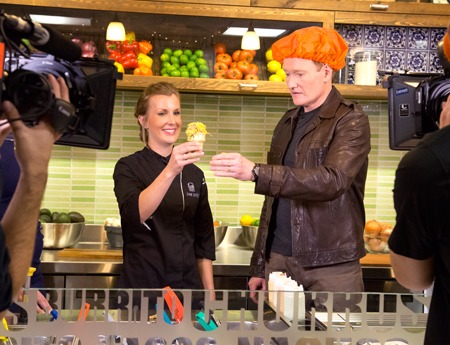Data Starting to Drive Branded Content Campaigns

Related: Programmatic Ad Tech Platforms Proliferate
As traditional advertising loses appeal, media companies and media agencies are looking for ways to help marketers tell their stories through engaging content. One tool they are using to do that: data.
The process is being turbocharged by data and technology that offers more information about the target audience and can deliver the right content and messages to the appropriate consumers.
One company exploring these new methods is Turner Broadcasting, which has introduced several data-driven products for advertisers and is ramping up its custom content capabilities.
“Things are heading from brand advertising in the traditional sense to brand storytelling, with data underpinning it to get the stories to the right people,” says Dan Riess, executive VP of integrated marketing and branded content at Turner.
Riess says some content projects start with data, while others start with a big creative idea. In either case, data still plays a key role in identifying the audiences Turner and its clients are trying to reach.
Turner looks to see which of its brands—networks, shows and talent—can deliver the target audience a marketer is pursuing.
The smarter way to stay on top of broadcasting and cable industry. Sign up below
For example, last year Taco Bell teamed up with TBS late-night host Conan O’Brien on a humorous branded piece. O’Brien visited Taco Bell’s test kitchen, where he created chaos and some new products that ranged from interesting to inedible.
“They’re coming to us because of Conan’s audience and how he reaches them, and we find the creative idea,” Riess says. He notes Turner is increasingly using data to push the content to audiences most likely to be buyers of the advertiser’s products and services.
O’Brien is also an example of the kind of influencer marketing that is popular using the stars of YouTube videos. But Riess notes that O’Brien, the stars of TNT’s Inside the NBA and other Turner personalities are bigger stars and more influential than online personalities.
Turner is also looking at new ways of working with advertisers and agencies. With media agency Starcom MediaVest, it has formed a unique partnership that has been renewed for three years.
Instead of buying integrations for specific brands in specific shows during the upfront, the agency and programmer agreed to do a certain number of integrations per year. Turner learns about all of Starcom’s clients’ brands and essentially puts giant posters in the writers’ rooms of every one of their original shows. As the writers produce scripts, they have the flexibility to use the portfolio of brands in natural ways.
“It’s worked out fantastically because we’ve been able to come up with very natural, very creative ways to incorporate [brands] into a show that you wouldn’t get if you had jammed together a brand and a show nine months before you were in production,” Riess says.
Riess says the branded content is increasingly becoming a part of cross-platform campaigns. “We’re doing them across on-air and social and real time,” he says. Data is being used to take “the creative idea and see who it resonates with, augmenting it for different groups and delivering it to them in natural ways.”
He pointed to video Turner produced for Snickers around last Halloween as an example where they moved fast to get it on the air and amplified via social media within a day or two. Those efforts built reach to about 5 million consumers in the target market.
This month, Turner announced a big content project with producer Mark Burnett and Intel. The initiative is built around a TBS reality series tentatively titled America’s Greatest Makers, which will pit teams of innovators looking to produce the next big smart wearable device using Intel’s Curie technology. It will incorporate the use of different Turner brands to create content to reach specific consumer segments.
“The focus is around the show, but what the partnership is creating content,” Riess says. “We’re working through some of the extensions of this, but we will certainly have late-night funny people doing things with this content and with these makers and these teams that will be in their own voice and deliver that audience. And we’ll look on the CNN front, because [technology] is an area we cover all the time.”
Even sports will be involved. “We’ll be figuring out how we deliver exactly the right message to those fans as part of a broader reach partnership,” Riess says.
Meanwhile, Starcom MediaVest has come up with a way to attach branded content to paid media. The agency first aimed Content@Scale at display advertising, but has since branched out to video applications.
“Video was obviously one of the best places to connect with consumers,” says Lindsay Lichtenberg, senior VP, Starcom director of publishing platforms and partnerships. “You have the scope to tell a really relevant, engaging, emotional story. And we know people are spending more and more time with online video in particular, so we knew we needed to crack that space.”
The video product is powered by Innovid, a dynamic video ad service, and delivers standard pre-roll spots with interactive experiences in an overlay.
Lichtenberg says many brands use spots and other content they’ve produced for TV and used it as pre-roll. That works, she adds, “but the opportunity is to really speak to consumers and understanding the environment they’re in and the engagement you have at your disposal.”
Content@Scale uses data to target specific groups of consumers for appropriate messaging. One recent campaign for Mondelez brands was designed to reach people interested in the U.S. women’s soccer team.
Several Mondelez brands were involved in Pass the Love, a promotional campaign for women’s soccer. The company also had videos that could be published an overlays that included a video game focused on national team star Alex Morgan and other players. There was also a click-to-buy option that allowed viewers to purchase Ritz, Chips Ahoy or Trident at Target or Walmart.
Data was used to select media, and a big portion wound up on desktop and mobile video from Fox Sports that carried highlights from games as the U.S. team advanced through the tournament. Consumers who watched the content spent an average of 56 seconds of additional time with the experience beyond watching the pre-roll ad—which was anywhere from 15 to 30 seconds in length, Lichtenberg says. That translated into raising awareness of Mondelez’ brands’ support of the women’s soccer team.
Lichtenberg says the success of Content@Scale changes the conversation the agency has with media partners. “The fact that we can build these experiences means we can make these advertising messages a lot more rich and engaging for consumers,” she says.
Doing something similar with TV is something the agency is looking into for the future, Lichtenberg says.
“The coolest thing is the opportunity that lies ahead,” she says. “The success we’ve seen and continue to see with the product leads us to believe we’re on the right path. I’m encouraged by where the industry is heading creatively and through data and technology. It’s exciting to work in this space right now.”
Jon has been business editor of Broadcasting+Cable since 2010. He focuses on revenue-generating activities, including advertising and distribution, as well as executive intrigue and merger and acquisition activity. Just about any story is fair game, if a dollar sign can make its way into the article. Before B+C, Jon covered the industry for TVWeek, Cable World, Electronic Media, Advertising Age and The New York Post. A native New Yorker, Jon is hiding in plain sight in the suburbs of Chicago.

